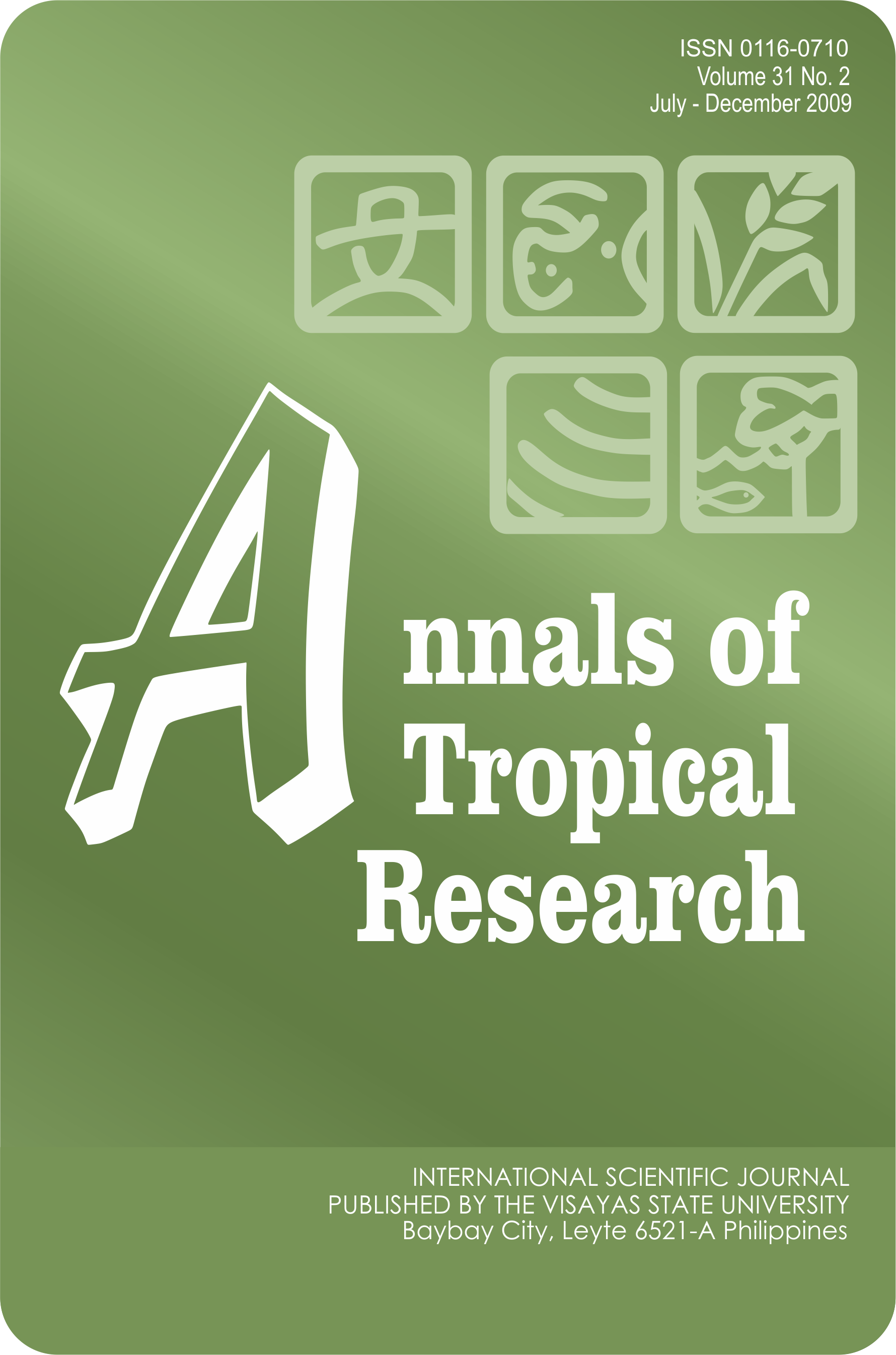Sweetpotato weevil pheromones and their precursors: Dose-response and structure-activity relationship in Cylas formicarius Fabr., Cylas brunneus Olivier and Cylas puncticollis Boheman
DOI:
https://doi.org/10.32945/atr3122.2009Keywords:
Cylas formicarius, Cylas brunneus, Cylas puncticollis, female sex pheromones, crotonic acid, olfactometer assay, pheromone gland, chemical profile, GC-MSAbstract
Structure-activity and species specificity of the three synthetic sweetpotato weevil pheromones, (Z)-3-dodecenyl-(E)-2-butenoate of C. formicarius, dodecenyl-(E)-2-butenoate of C. brunneus and decyl-(E)-2-butenoate C. puncticollis and their corresponding precursor free alcohols and trans-crotonic acid were assayed on virgin males of the three weevil species in the laboratory using one-arm olfactometer with bidirectional airflow. Each of the sex pheromones was specific to its conspecific males, however, a pheromone of aa particular species may become active to another species only at higher amount to elicit the same degree of response. The free alcohol precursor of the pheromone of C. formicarius, 3-Z- docecen-1-ol, showed sexual stimulation on C. brunneus and C. puncticollis while dodecan-1-ol functioned as an aggregation compound. The decan-1-ol, precursor of C. puncticollis pheromone, had the lowest attraction index regardless of weevil species tested. Males of C. formicarius and C. brunneus exposed to trans-crotonic acid performed a complete series of mating behavior from antennae elevation to copulation while C. puncticollis exhibited the initial stage of mating behavior but copulation was not reached. This indicated that the crotonate part of the ester played a crucial role in activity of sex pheromone of the sweetpotato weevils. The unsaturation in the aliphatic chain was only important in C. formicarius pheromone for higher level of attraction and not to the African weevil species. The dichloromethane extract of the pheromone glands containing the known sex pheromone at concentration much lower than the synthetic pheromone used has higher attraction index. This suggests the possibility of other compounds present in the pheromone bouquets working synergistically for increased sexual activity. In GC and GC-MS, other compounds were detected at higher amount than the identified pheromones which may play an important role in the attraction and successful mating of the Cylas spp.
Downloads
Submitted
Published
How to Cite
Issue
Section
License

This work is licensed under a Creative Commons Attribution-NonCommercial-ShareAlike 4.0 International License.











